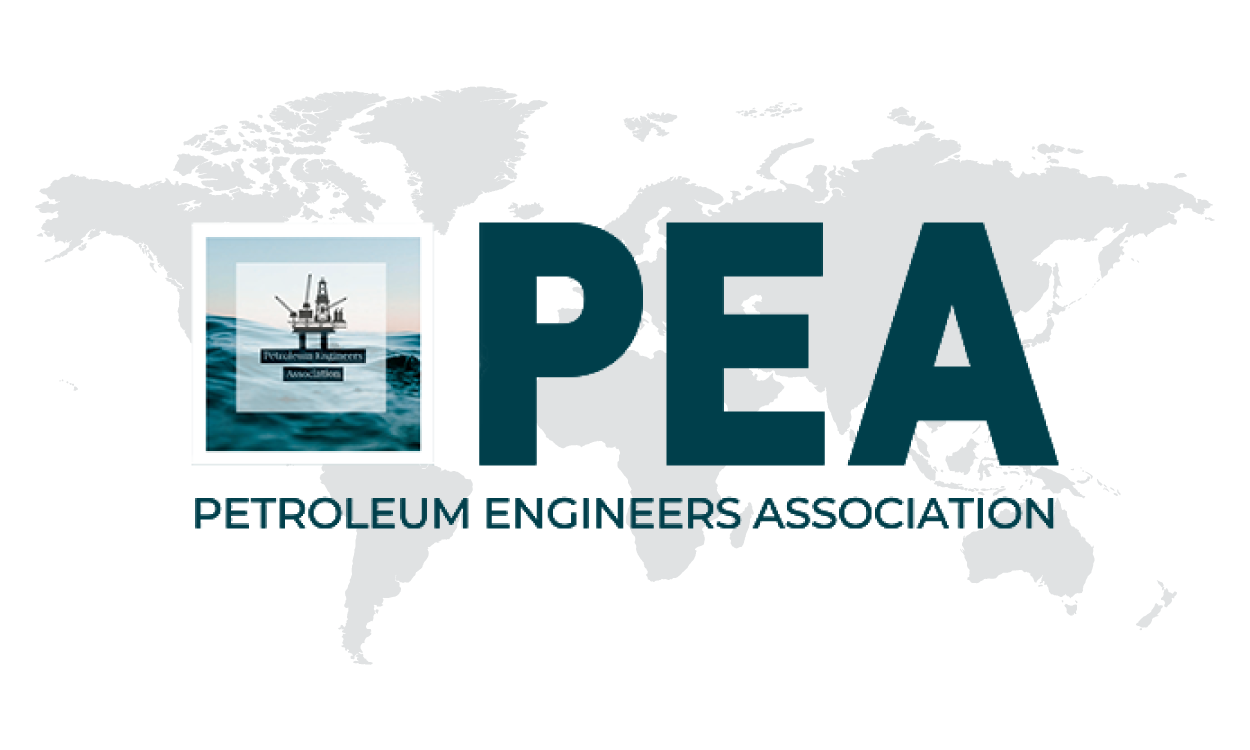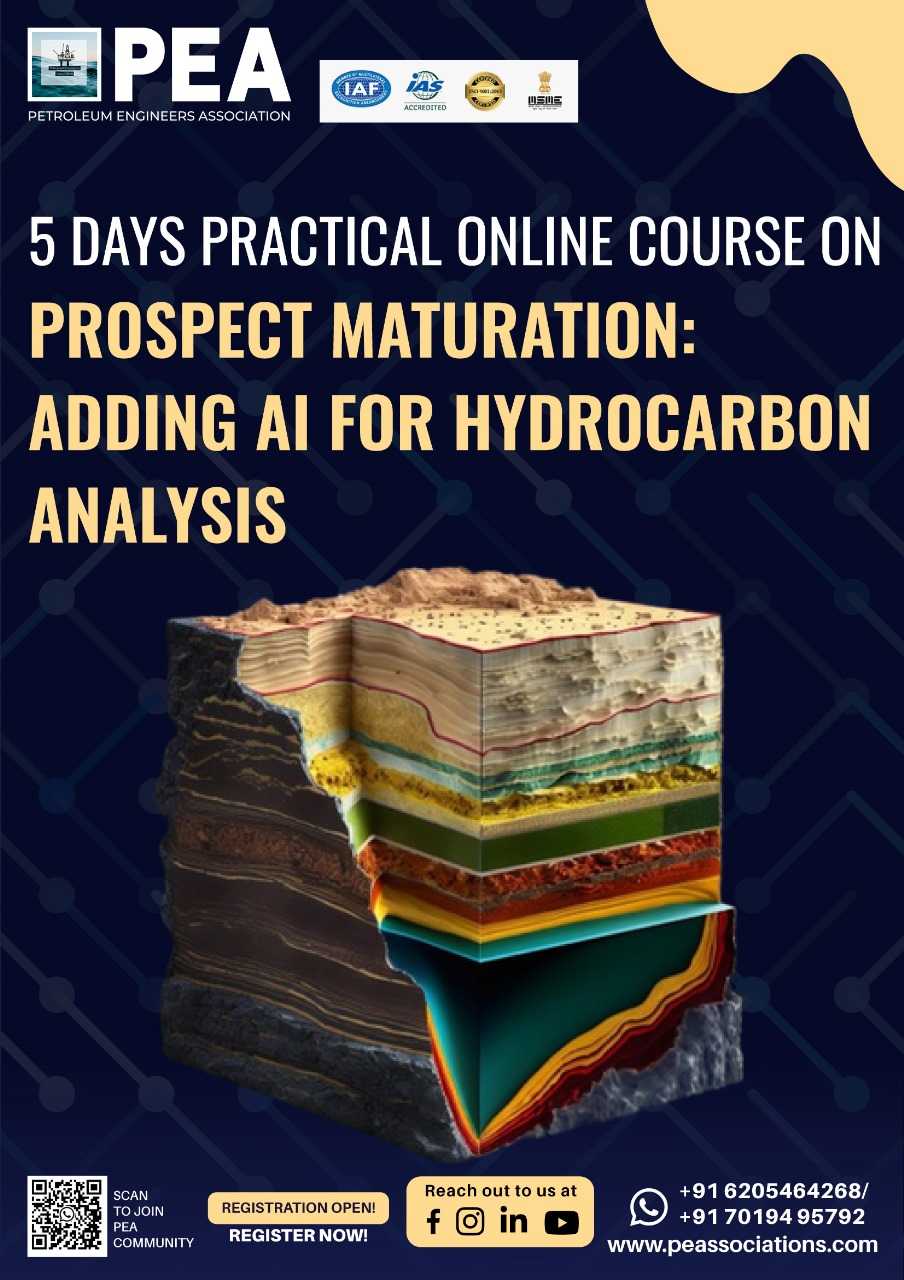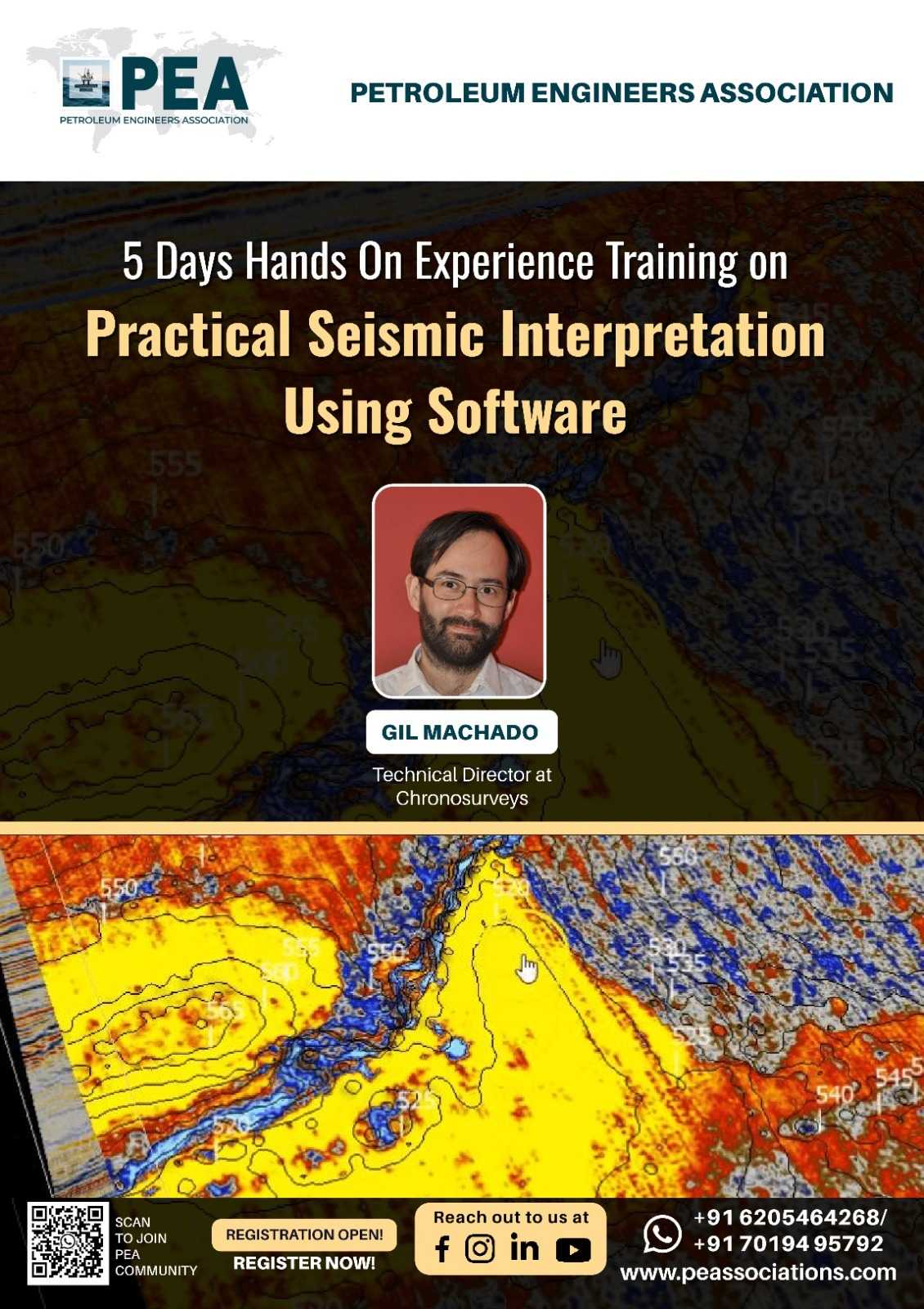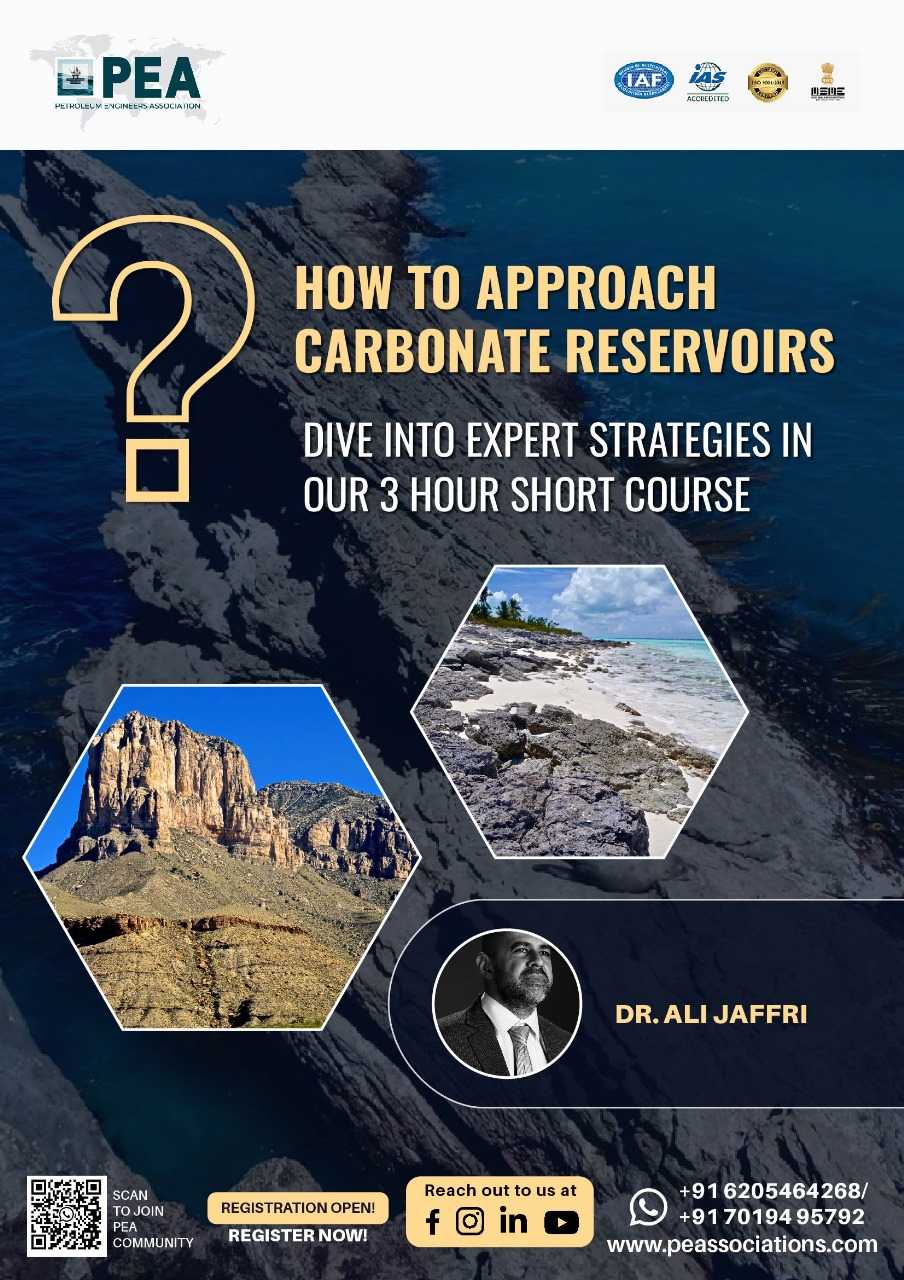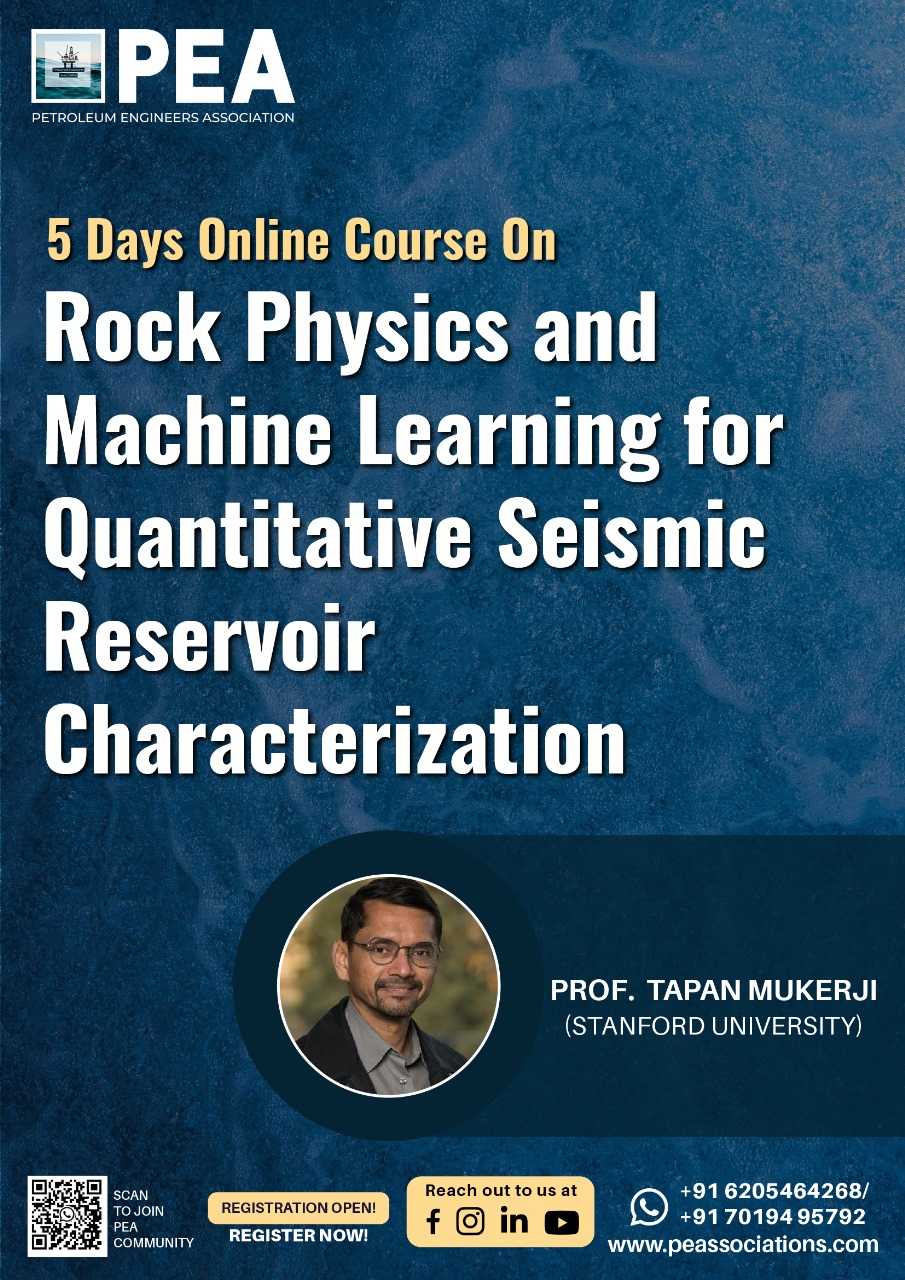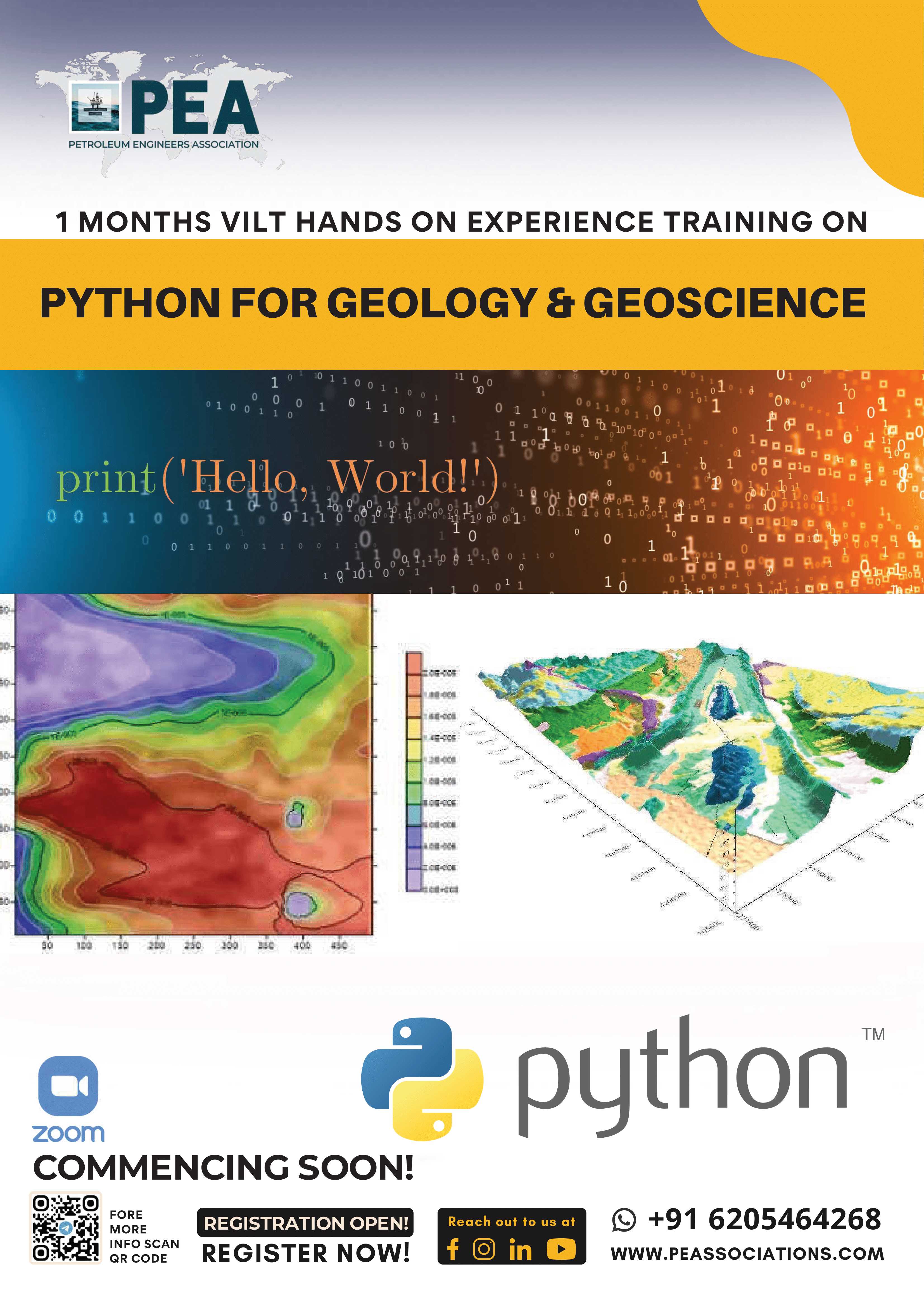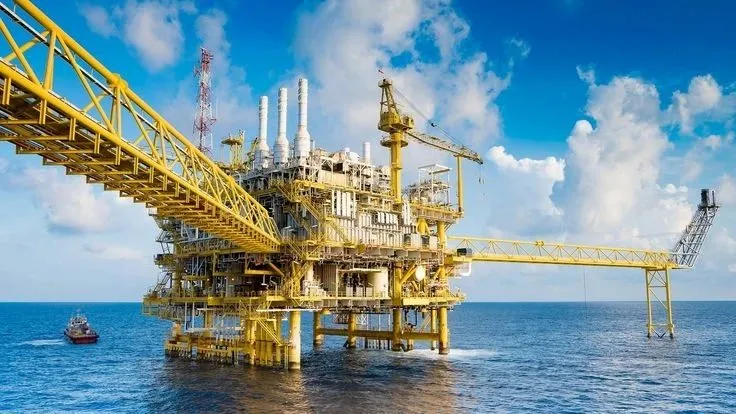Boost your team's skills and your budget! Enjoy group discounts for collaborative learning. Send an inquiry to info@peassociations.com.
Prospect Maturation: Adding AI for Hydrocarbon Analysis
Description
Day 1:
Introductions & Welcoming remarks
1. Introduction to the course topics and the basics: A brief introduction of the course topics and concepts that will be covered during the course.
2. Prospects, Its Maturation, and Plays: This section of the module aims to emphasize the significance of comprehending prospect details within the framework of basin type and basin development, as well as the "play" associated with the prospect.
3. Risks, Volumes & Uncertainty: Provides clarification of how to make use of the terms "Risk" and "Uncertainty" within the context of exploration. A systematic workflow for evaluating potential risks associated with prospects. Also, an introduction to the calculation of prospect volumes, along with a comprehensive discussion of potential pitfalls and biases that may arise during the estimation process.
4. Prospects and portfolios: provide an overview of various prospect categories, including near-field, proven play, and greenfield prospects. Additionally, it will delve into the discussion of ranking criteria used to evaluate these prospects.
5. Overview of Machine Learning (ML): an introduction to ML together with applications to the ML in Prospect maturation.
Day 2:
Recap Day 1
1. Traps and their types: The primary source of uncertainty in evaluating prospect volumes lies in the uncertainty surrounding the estimation of gross rock volume. Emphasizing the significance of identifying potential spill and leak points that have the ability to regulate the contact between hydrocarbons (HC) and water. The concept of a "read thread" is introduced, which is then followed by an exercise aimed at identifying potential points of spillage and leakage.
2. Machine Learning (ML) for Prediction: Applications for the k-Nearest Neighbor (KNN) methodology, which uses machine learning to identify probable reservoirs, include predicting electro facies, lithology, and the HC Zone.
3. Traps in important HC provinces: rift basins, sag basins, passive edges, deltas, deep water settings, and carbonate settings are a few examples of working traps;
4. Reservoirs: the key reservoir parameters (thickness, N/G, porosity, permeability, and reservoir geometries) will be explained. Modern probabilistic volume assessment tools make it possible to input detailed reservoir data. We will discuss cases where detail is essential and cases where it is not. We will talk about the relationship (dependence) between reservoir input parameters and how it impacts computed volumes.
5. Reservoirs in important HC provinces: examples of reservoirs in different basin types and depositional settings of around the globe: rift basins, deltas, deep water settings, carbonate provinces.
Day 3:
Recap Day 2
1. Seismic Attributes, AVO Analysis: By studying qualities and techniques, we can better understand when, why, and how to apply seismic attributes. Meaning of characteristics, it either works well or poorly for a particular goal, Workflows and applications
2. Seals: In exploration, seals frequently receive less consideration than they deserve. Leakage mechanisms will be discussed, including permeability seals and hydraulic seal fracturing. The role of seals in oil and gas differential entrapment will be discussed. Fault seal mechanisms are demonstrated by calculating Clay Smear Potential (CSP) at multiple locations along a fault plane.
3. Pressures and overpressures: Pressure gradients and how they can be used as an indication to determine fluid contacts in traps. Mechanisms of overpressure development and the provinces where they typically occur are presented. A discussion of the meaning of the fracture gradient and Leak-off Pressures follows.
4. Seals & Pressures in important HC provinces: A comprehensive compilation of functional seals observed in various basin types and settings worldwide, with examples of cases where seals are breached and of cases where differential leakage of gas has allowed oil to be trapped, despite the abundant gas charge.
5. Charge: The various source rock types (I, II, and III) and their typical expulsion products are examined, as well as the circumstances in which they can be deposited and retained in the subsurface. An exercise on creating a burial diagram is included, and an explanation of how inversion (uplift and erosion) affects hydrocarbon charge is provided.
Day 4:
Recap Day 3
1. Initializing Project in Software: Loading data, interpretation, modelling reservoir, seal, source, and cap rock.
2. Charge in important HC provinces: Examples of charge in different basin types and depositional settings from around the globe. This module includes an exercise on predicting source rocks from a regional seismic section.
3. Risk assessment - practical group exercise: This module will examine the probability factors for trap, reservoir, seal, and charge using the read thread prospect that was previously introduced. The activity is structured such that participants will discuss a number of real-world, everyday situations. This part of course is often very energizing and produce not just brilliant debates but also valuable practical insights about how to analyse risks.
4. Volume assessment - back-of-the-envelope calculation: This is a quick session where the participants are asked to estimate the low, likely, and high volumes of a prospect "on the back of an envelope." This module's goal is to eliminate any "black box" impression that our probabilistic volume evaluation tools might have.
5. Volumes and Portfolios: To provide a hands-on explanation of how prospect volumes can be increased. We'll highlight a few common but incorrect behaviors. We'll talk about prospect dependencies and how they affect prospect additions.
Day 5:
Recap Day 4
1. Exploration economics: An introductory module on exploration economics with an explanation of the main factors that control the economic viability of prospects, and of the terms Net Present Value (NPV) and Expected Monetary Value (EMV). The module includes an exercise on calculating the EMV of a prospect.
2. Geophysical evidence: "Direct Hydrocarbon Indicators" (DHIs) a reliable indicator of the existence of trapped hydrocarbons. This module presents a method for calculating an increase in the Probability of Success (POS) and describes dangers (with real-world examples). The program also discusses how prospect POS is impacted by controlled source electromagnetics (CSEM)
3. Local prospect examples: Participants in this session have the chance to present examples of prospects they may be working on and talk about specific risk and volume assessment challenges in the context of what they have learned. This may be an excellent opportunity to put the primary lessons learned into practice, particularly for in-house courses.
4. Spectral Analysis, Application, and DHI: Spectral Decomposition or Spectrum analysis is analysis in terms of a spectrum of frequencies that will be introduced.
5. Look backs: a brief lesson on how post-drill well results should be compared to pre-drill predictions. It is emphasized that if we are aware of any bias in our predictions, we can only work to improve them.
Who Should Join the Course
This course is designed primarily for Geoscientists in exploration who would like to improve their expertise in the prospect maturation process and risk and volume assessment. The course has proven to be of value for explorers in the early phase of their careers, seasoned explorers, and team leaders.
It will also benefit staff from disciplines working closely with exploration staff including Prospect Portfolio Analysts, Petro physicists, Geophysicists, and Reservoir Engineers.
Benefits of Joining
The attendees of the course will acquire a comprehensive understanding of the fundamental components necessary for conducting accurate risk and volume assessments of exploration prospects. The course aims to enable participants to generate thorough and practical evaluations for potential prospects they may be involved with. Additionally, it seeks to enhance their ability to critically analyze and question risk and volume assessments made by colleagues, partners, or competitors through the utilization of artificial intelligence. The introduction of each topic is facilitated through a lecture, followed by practical exercises and discussions to enhance the learning process. Both paper and electronic versions of the hand-out materials will be made available. Participants will be allocated time to discuss various aspects of potential prospects brought in by the course attendees.
Course Objectives
• To understand the essentials for realistic risk and volume assessments of exploration prospects
• To produce well-considered and realistic assessments for prospects
• To understand and constructively challenge risk and volume assessments

